
bartley
-
Posts
407 -
Joined
-
Last visited
Content Type
Profiles
Forums
Gallery
Events
Posts posted by bartley
-
-
Glenn,
I am always a bit reticent about providing any advice here as I am a rank beginner at this game. However, for what its worth here is a picture of my scraper and the result. I think I used the one on the left or something like it. I made about 10 of them in the end.
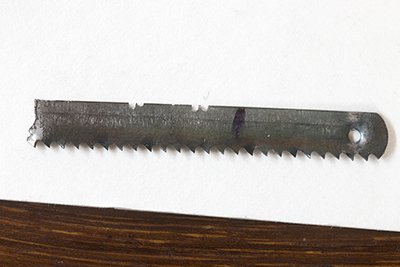

The few tests that I did with yellow cedar gave very indistinct results and it was only when I used boxwood that I could obtain a satisfactory profile. I also stuck the strip to a glass plate on my bench with double sided tape to stop it moving. I found that several light strokes were best until the profile was established and then I could be more aggressive.
John
- DelF, BobG, EricWilliamMarshall and 6 others
-
 9
9
-
On 8/22/2020 at 8:06 AM, BobG said:
Glenn, I had a tough time scraping the moulding for my Medway Longboat. I tried cutting patterns into brass, box cutter blades, and razor blades but I couldn't get a nice, smooth, scraped pattern from any of them. I eventually bought a set of Artesania Latina scrapers and, although they didn't fit perfectly because they are metric, I was able to finally scrape a nice pattern on the moulding.
Glenn,
I have these scrapers. They are good but I find them far too big for the scale we are working at. I used jewelers files to cut a profile into the back of a annealed hacksaw blade. I think I might have also used a jewelers saw. There are several posts on this site about this technique.
John
-
On 3/9/2020 at 4:45 AM, Justin P. said:
Can someone please comment on how you typically dispose of the blackening solution and the spares once your done? Ive used it (Jax specifically) several times and have been reluctant to send it down the drain. Ive mostly just used it sparingly and then soaked it up into used shop towels and then hang outside to evaporate. How is the Sparex disposed of? How are you cleaning the crock pot for storage?
Justin,
Yes, disposal is always an issue. I am a professional chemist and so disposal is part of our trade. Sparex once dissolved is essentially sulfuric acid. So to dispose of it you should pour it slowly into bicarbonate. It will fizz so do it slowly. Once the fizzing stops the Sparex is neutralized and you can dispose of it down the sink, The blackening solution is another matter. This, when fresh, is selenious acid. When you use it it is converted to black selenium metal and copper sulfate That's the blue colour. But you cant neutralise or destroy the selenium. or copper. So a spent solution contains selenium in one form or another and copper sulfate. Neither of these is too good for the environment but you only have small quantities. You shouldn't dispose of it down the sink so absorbing onto paper and burying it is probably OK. Over here we can take such things to a toxic chemicals disposal site.
John
-
I actually posted this elsewhere but it is probably more appropriate here.
This is an example of a blackening problem which others may have experienced without knowing the reason.
These belaying pins were sold as being brass so on the right I used my usual technique of treating for 5 min with sodium hydrogen sulfate then blackening. Even after about 1 min the result was poor.
On reflection they were very shiny so were probably lacquered. So on the left the treatment was: - rub with steel wool, soak in acetone for about 1 min, 5 min in sodium hydrogen sulfate then blackening. After only for 10 sec the result was excellent.
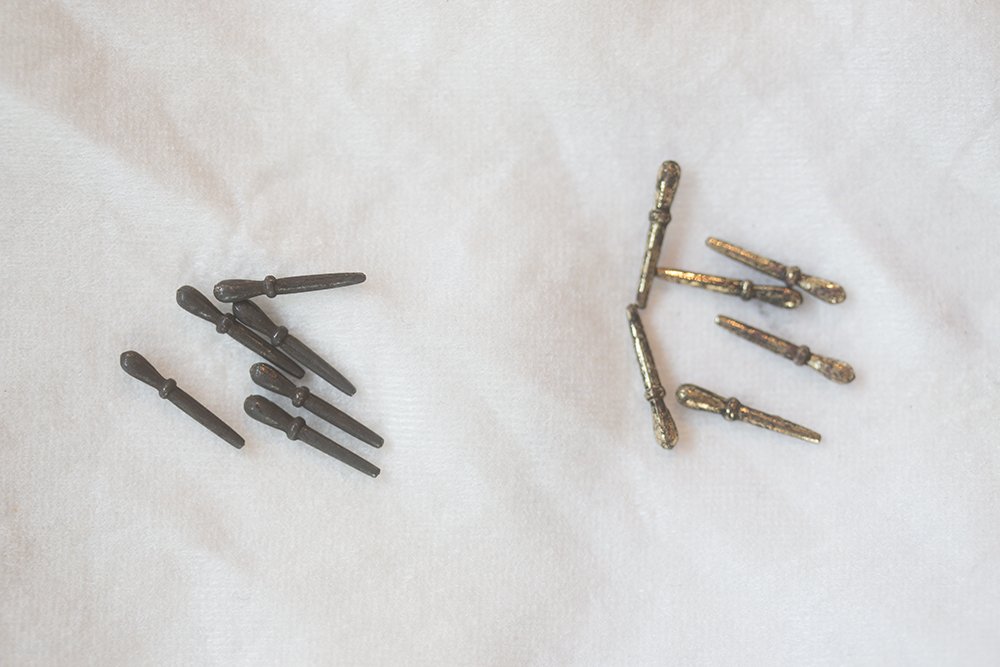
Incidentally, Sparex is just a very expensive packet of sodium hydrogen sulfate. So if you have access to the chemical itself it is much cheaper
John
-
The continuing saga of the belaying pins!
I can make boxwood ones down to close to 1 mm in diameter at the lower end but for me consistency is the problem If I just had to make one I would be quite happy but 20 odd? I am not sure I have the patience or the skill. Here is a pic of mine versus the commercial ones:
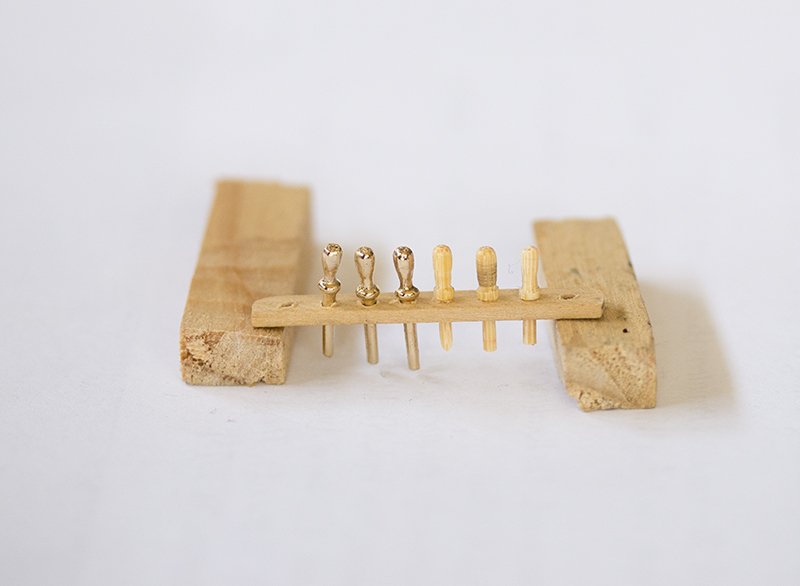
- MEDDO, GrandpaPhil, mtaylor and 1 other
-
 4
4
-
1 hour ago, glbarlow said:
I'm sure you'll enjoy it, and glad I helped as your find your way. The first step is to change the blade, I've never used the one that came with the saw - I could cut 2x4s with that thing.
Glenn,
It sounds like you only do ripping using the slitting blade. Of course that is what your post is about. The blade which comes with the machine is a cross-cut blade which I use quite a bit. Magic for cutting reproducible lengths. Incidentally I found that a zero clearance insert for the slitting blade improved the quality of my ripped planks enormously especial if I was cutting narrow ones,
John
- Chuck Seiler, mtaylor and glbarlow
-
 3
3
-
Glenn,
Thanks for putting this together. It is reassuring to know that what I am doing is more or less the same as what you are doing.
I think that a good safety tip is to "rehearse the cut". By which I mean push the wood through without the saw running. Especially if you haven't used the saw for a while or it is a cut you haven't done for a while. A couple of times I found that I had inadvertently moved the saw or stored something at the exit end that would have stopped the wood exiting freely.
John
- druxey, Ryland Craze, MEDDO and 4 others
-
 7
7
-
6 hours ago, glbarlow said:
According to who... The names I cited at the top of my post are all the references I need for it being the best way, not to mention it works for me. But as I said, there is always going to be other people with other ways that think theirs is best, doesn’t mean it’s the “right way” nor would I say it’s the “wrong way,” it’s just a choice.
Glenn,
A year ago I was new to table saws myself. If you read books or watch videos on the operation of full-sized table saws you will find that they all recommend that the safe way to avoid kickback is to cut thin strips on the outside of the blade. this was why I was concerned initially. but after the recommendations of Jim, Chuck and Jefff from HobbyMill I began doing the way you do it with some slight variations in the exact technique and have never had a problem. An important point is never yo but any sideways pressure on the back (exit end] of the blade. So for example a push stick must be pushed straight through with no sideways pressure.
John
-
Interesting Glenn,
When I innocently posted this photo in my log last year:
I got lots of PM's about how dangerous it was.
Here is one of my responses:
"Yes, You are correct. this is not the recommended way but many people use this technique and I am not an experienced user of table saws either so was a bit concerned . So I asked Jim Byrnes about this and he replied that ripping between the blade and the fence was the way to go . Apparently there is a very small offset at the rear of the fence to minimize the chances of kickback.
I used a block of wood on the left hand side behind the blade to push the billet against the fence and then used a push stick once the billet was on the table. There was no evidence of any kick back in the forty odd planks that I cut. Of course you don't need to move the fence if you do it this way and so I imagine the reproducibility is better. Incidentally, Chuck does it this way and he must have cut tens of thousands of planks."
John
-
With the longer stock all I find I need to do is to provide a bit more support at the end of a table. The problem is the longer plank tilts up as it goes off the end of the table. I just have a block of wood the same height as the table which supports the plank as it comes off the table.
John
-
Post 33: Pin Rails
I have constructed the pin rails from 3/64 strip as suggested by Chuck. He makes his own pins from 3/64 square strip but I found that my skill s could not match his especially making 20 odd all the same! so I opted for commercial brass ones. Clearly they will need some further treatment - blackening, or maybe painting to llok like wood:
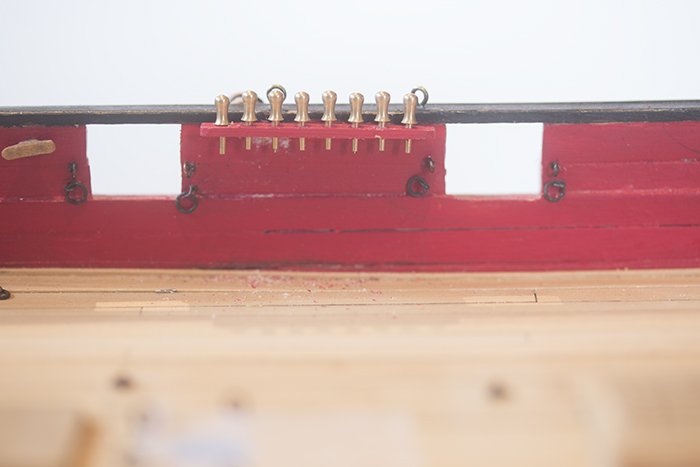
These fit tightly into a 1mm hole and seem to be about the correct scale. . Here I need some advice Chuck because they are only 8mm long and do not extend far below the pin rail. I have some 12 mm long ones but they need a 1.2 mm hole as you can see in this mock-up:
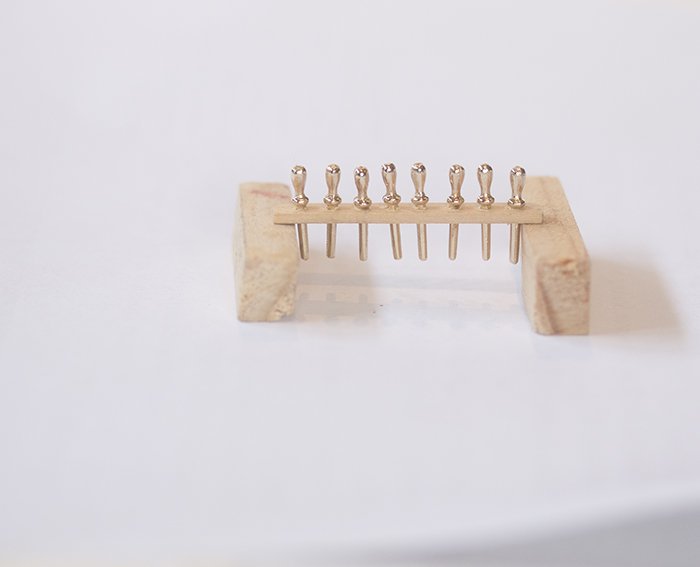
The tops also look a bit more "authentic". What do you think Chuck? I am worried about the consequences of the short ones when it comes to rigging them.
John
- mtaylor, glbarlow, GrandpaPhil and 1 other
-
 4
4
-
Post 32: The Winch
The winch was constructed as per the plans. The posts were made from 5.6 mm square stock (7/32) and the cross beam from 4.75 mm Square (3/16). The tops of the posts were shaped in a similar manner to that fused for the timber-heads (knife and needle file):
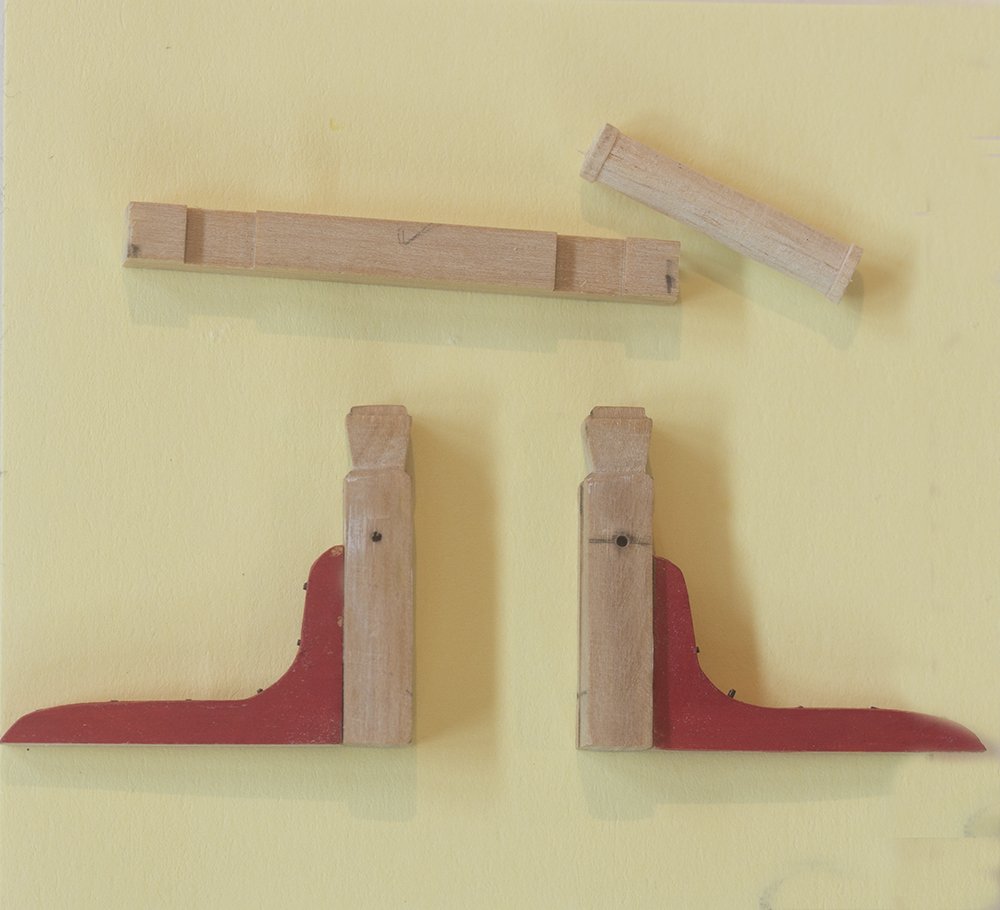
The roller was tuned on my homemade lathe to a diameter of 4 mm and the bolt heads were simulated with 24 ga blackened wire:
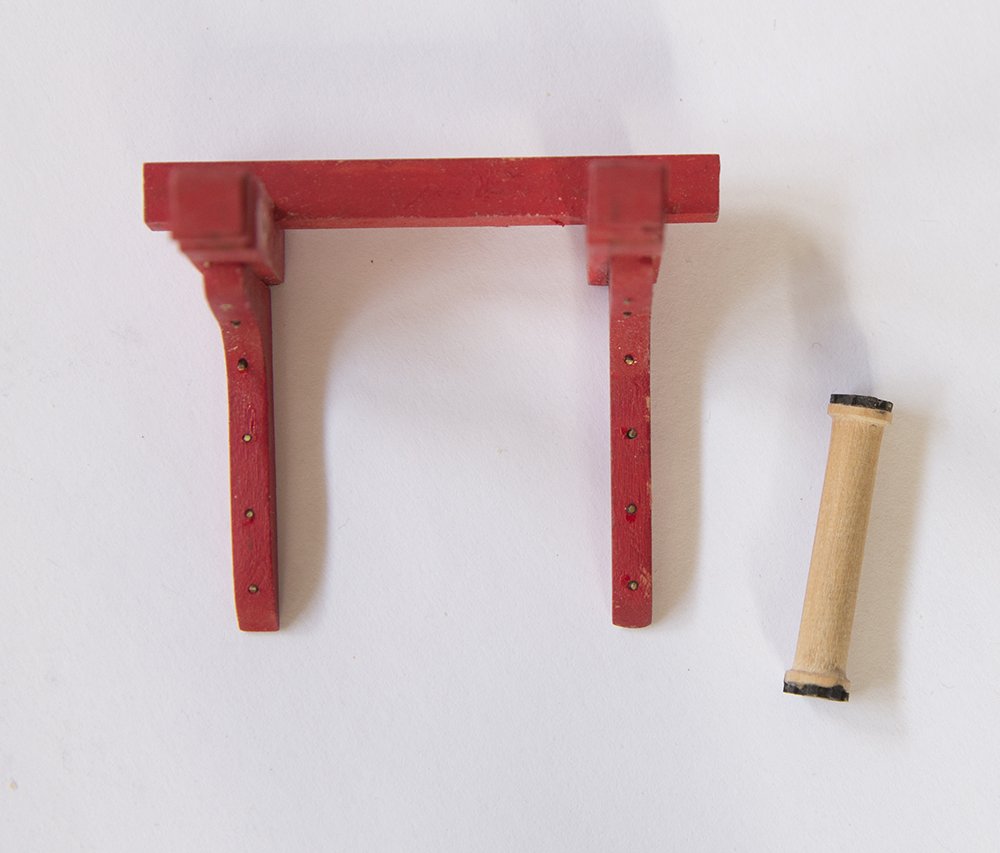
Micro-tubing was used for the winch handles.
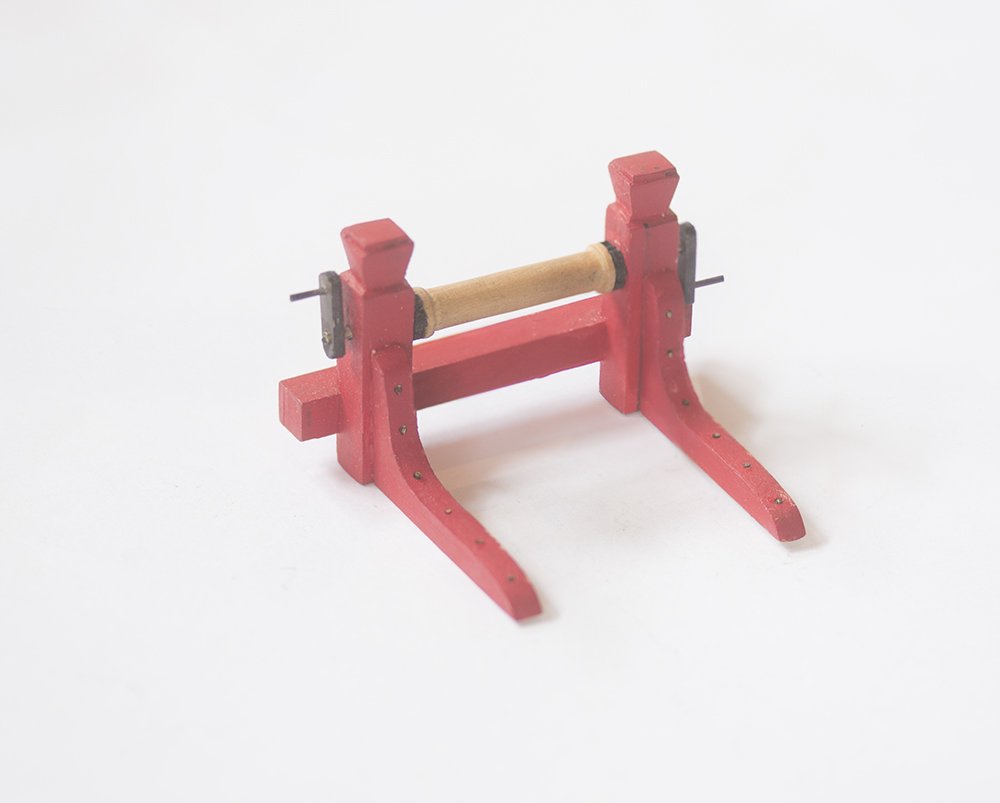
John
- GrandpaPhil, glbarlow, mtaylor and 5 others
-
 8
8
-
-
Post 31: Bowsprit
I am in the process of constructing the remaining deck furniture - Windlass etc. However, I decided to make and trial fit the bowsprit so that I can avoid maneuvering around the deck fittings. I turned this from 5/16 square stock as suggested by chuck. I drilled three 1.5 mm holes while the stock was still square and also the holes for the sheave at the tip
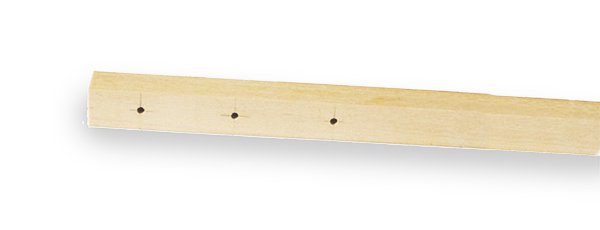
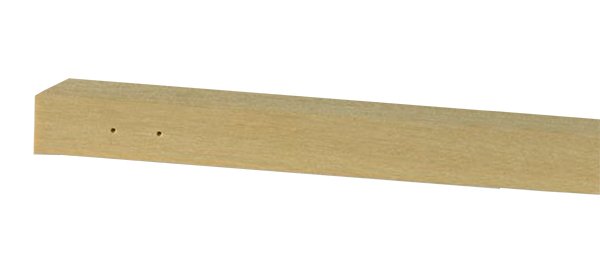
I then turned this on my home made "lathe"
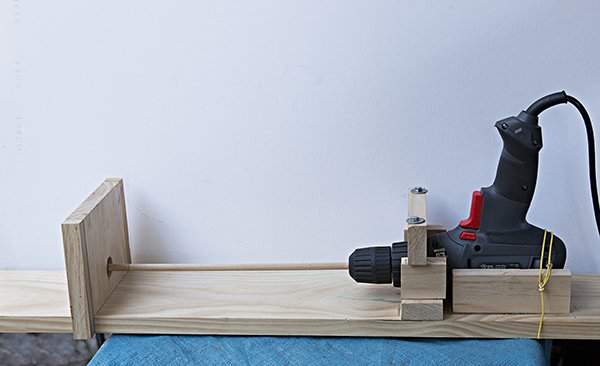
The board at the end has a Roller Blade bearing. I actually have two of these and on longer jobs I position one about half way along to add extra support. I find this works pretty well and is cheap!
Of course I had to enlarge the hole in the bow to fit. Initially, I did this with drills of increasing diameter but this led to tearing of the timber so in the end I did most of the work with a round file. Here is the fitted bowsprit:
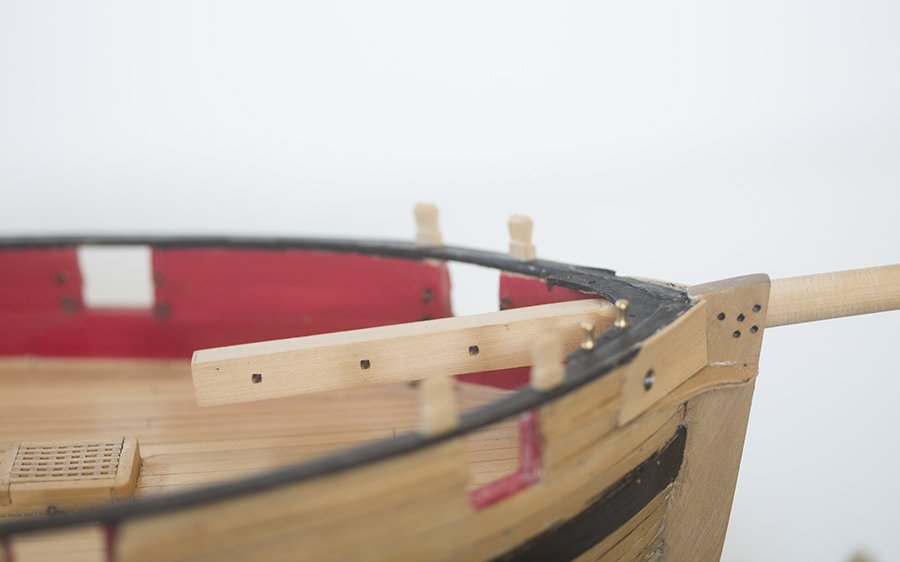
John
- Bill Brown, glbarlow, GrandpaPhil and 5 others
-
 8
8
-
-
Very impressive Glen. Have a look at mine at the same stage. Just lacks the crispness of yours doesn't it?
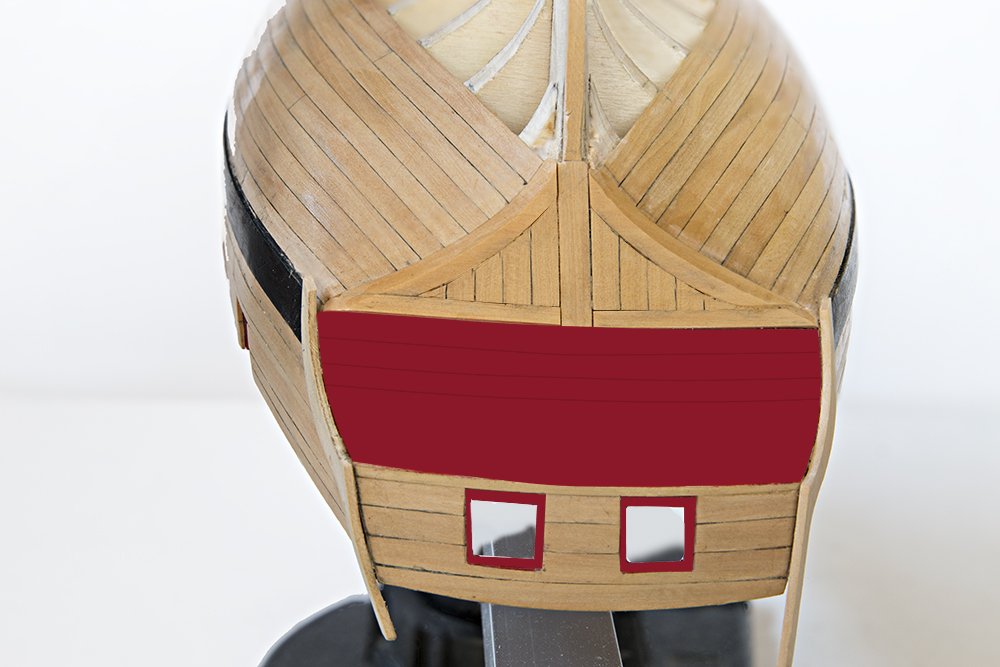
John
-
I use a small plastic sieve to contain my parts and use Sparex to clean off the contamination. So the sieve containing the parts goes into the Sparex for a couple of minutes then into a bicarbonate bath to neutralise and wash under running water. Then into the blackening reagent (no drying). Again into the bicarbonate to quench the reaction then wash again in running water. Only then do I dry the parts before gently polishing with a micro-fibre cloth. I used to use an acetone step but no longer find it necessary. If I did I would allow to dry before the next step. But acetone dries quite quickly.
John
- mtaylor, thibaultron and Canute
-
 3
3
-
As has been mentioned here before, take care with this stuff .All these preparations contain selenium dioxide (or selenious acid when it is in solution- same stuff in a different form). This stuff is highly toxic so wear gloves and ensure good ventilation.
Now, what is happening here is what chemists call a Redox Reaction. Modellers certainly do not need know any chemistry but there are a couple of important consequences of the chemistry. Firstly the metal (or actually the copper in the brass) is etched away by the selenious acid and goes into solution as copper ions. At the same time the selenious acid is converted to selenium metal (which is black) and this is deposited as a tiny black spec in place from which the copper was removed.
So notice that the Selenium metal is not chemically attached to the metal in any way so it can be removed by mechanical action. Also although others have warned about the flaking that is a consequence of prolonged action a second effect is that more of the metal surface is etched and surface detail is compromised. Obviously this is not important for an eyepin but more significant for a cannon, say. In the minute or so that it takes to achieve a good result this would be barely noticeable but if one were persist for half an hour there would be noticeable pitting and significant loss of detail.
All of these products also contain a mineral acid (nitric in Jax Black, hydrochloric in Jax Pewter Black, and phosphoric in Birchwood Casey) and they also usually contain some copper sulfate, which is there to moderate the reaction. This, of course, is the blue colour of the product
The Birchwood Casey product also contains molybdate which acts in a similar way but with the zinc in the alloy. So you possibly get a deeper black since both components of the brass are being blackened.
After the initial blackening most people polish the surface to remove any excess flaking. So the black stuff, which ends up on the cloth (in dvm27’s post for example) is Selenium metal which is also toxic and worse still it is a dust, which you can breath in. I would not be polishing with a power tool but if you must, wear a mask and gloves. If you get black on your fingers don’t go and eat your lunch with out washing it off with copious soap and water!
John
- MEDDO, iMustBeCrazy, thibaultron and 6 others
-
 9
9
-
Hi Jaeger,
On the subject of wind speed - or really "apparent" wind speed. It depends on the point of sailing. If you are sailing before the wind then as you say the apparent wind is less than the true wind speed but if you are sailing into the breeze then the apparent wind is stronger than the true wind. Also since the boat is at an angle to the wind at this point of sailing the addition of vectors causes the apparent wind to move aft. But you are definitely correct about the lack of shade on deck!
John
-
Jaeger,
I suspect volatility might be a factor. The IPA with a boiling point of around 83 will stay in contact with the PVA rather longer than ethanol. I don't think polarity differences are that much. IPA is marginally more aliphatic. Certainly 1-propanol has less solvent powerfor polar substances than ethanol.
John
-
-
On 7/23/2020 at 11:14 AM, glbarlow said:
I’m not at all precise about it. I soften the top back edge of the entire plank, beveling may be over selling it. I don’t put a hard 30 degree edge on it or anything. I find just rolling off the back edge works. I’m probably doing it wrong, but I don’t have any gaps and I would if I did nothing. I do check the fit as I go, the greater the curve (As in the stern, not the bow) the more the bevel. This plus the time bending the plank has made a big difference for me.
Glen,
Your planking is excellent. Much better than mine which has a few deficiencies but because I was using boxwood and my supplies were limited I could not afford to rip off too many planks!
On the subject of beveling - I am sure you know this as your planking is so good but perhaps for the benefit of others over beveling can be as bad as no beveling if you have to sand the hull much. So I think it needs to be reasonably correct.
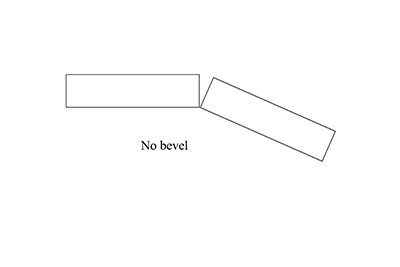
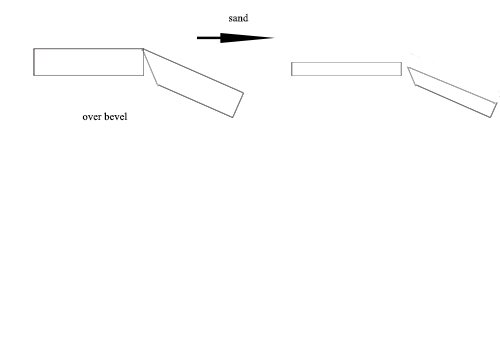
-
Post 30: Eyebolts and Cleats
there are a number of eyebolts and several cleats to be installed and this has occupied me for the last few days. I am always concerned about these commercial eyebolts pulling out when the tension is axial. When the tension is at right angles there is not a b problem of course and here most of the deck ringbolts are not used.
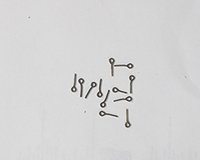
It has only really happened to me a couple of times but can a real pain if it happens late in the rigging process when the deck is not so accessible so I make my own by the "twisted pair" method. This is copper which is a bit soft but I cannot access brass in very many diameters. After they are made they are chemically blackened of course
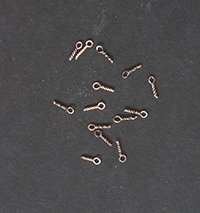
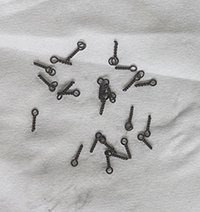
These were made from 24 gauge wire twisted around a 1.4 mm drill. For bolts with a ring. For bolts with a ring a 1.0 mm drill was used with the ring in the eye of the bolt. Rings were made by winding 24 gauge wire around a 2mm drill to form a spiral and then snipping it down the center.
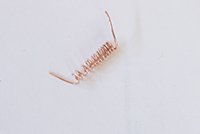
For the gun tackle eyebolts again a 1 mm drill was used.
Here is a picture showing the the deck eyebolts
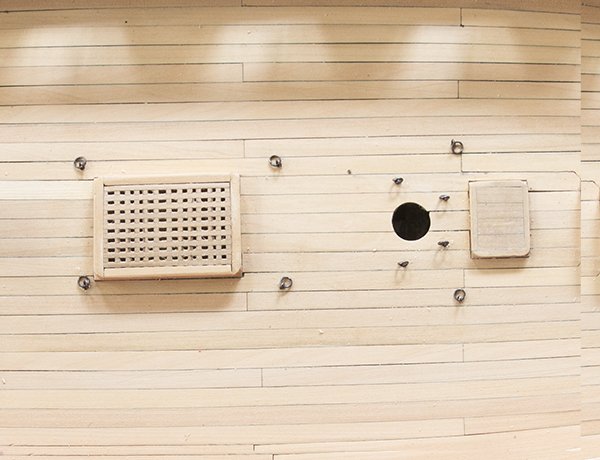
There are several cleats along the bulwarks and for these Syren cleats were used with a bit of shaping to give a reasonable appearance. (see the image in the previous post).
John
-
Post 29: Seats of Ease, Knees etc
There are three parts to the seats of ease, top, side and front. There are some tricky angles involved.. I had taken an overhead photograph of my hull and I used this to obtain the profile of the top:
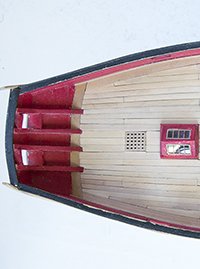
.One has to be careful about using such photos. Most zoom lenses and phones suffer from barrel distortion. So if you photograph the end of your room for example the walls will bow outward. Clearly, this makes taking a profile from such photographs inaccurate. I used a prime lens which suffers less from distortion and then Photoshop knows which lens you used and can correct for any distortion remaining. Anyway I did make a card template first but the profile was so close that I went straight to the 1/32 timber. For the sides I used the profile from the transom frame Y and this was accurate enough as well. For the ends I first made a long piece extending from port to starboard matching the deck profile and making sure it was the same height on each side. Then I cut the required section next to the bulwark on each side.
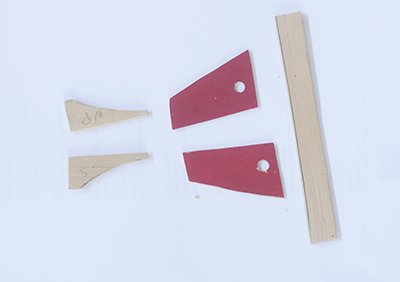
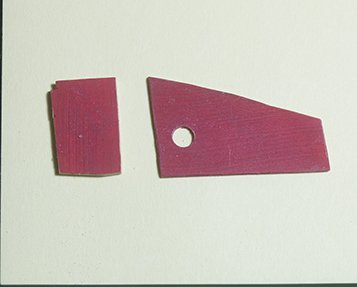
After assembly I checked that the heights were equal using my digital protractor. One of the advantages of these is that the hull does not need to be exactly level. I know my gunwales are level so I first placed the level between the gunwales and zeroed the device then bridging across the seats I could check the angle
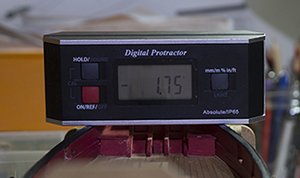
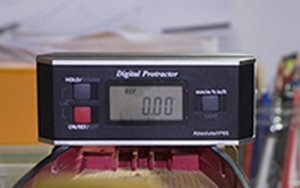
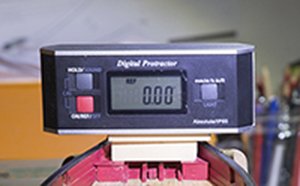
In fact the angle flicked between zero and 0.05. So even in the higher angle the difference in height works out to be only 0.06 mm
The curve of the transom knees was obtained from the plan and the approximate angle from my overhead photo but the biggest challenge was shaping them to fit the angle of the internal transom frames. This was trial and error and I found that a had to do a bit of reshaping of the transom frames themselves. obviously this should have been done earlier but I did not predict the problem until I tried to fit the knees. so here is the inboard of the stern showing those features.
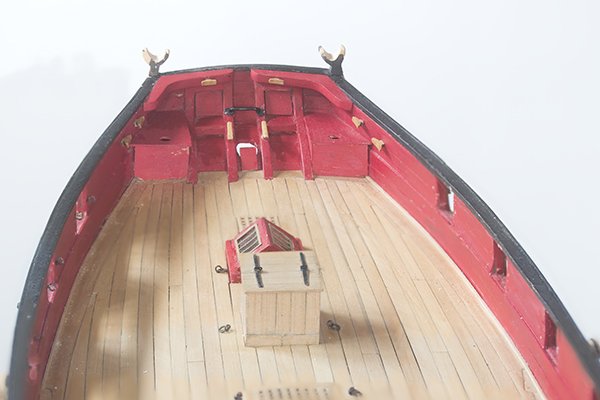
The horse for the boom sheet was fashioned from 1.2 mm wire and washers were made from light card as suggested by Chuck. The cleats are from siren and have been left natural at this stage. I know Chuck point out that contemporary models show them painted red. However, any any boat I owned which had wooden cleats we found it impossible to keep any protective coating, paint or varnish on thembecause of the friction from the rope. Modern synthetic rope is not so bad but hemp is like sandpaper. I can always decide to paint them later.
John
- MEDDO, Chuck, EricWilliamMarshall and 3 others
-
 6
6

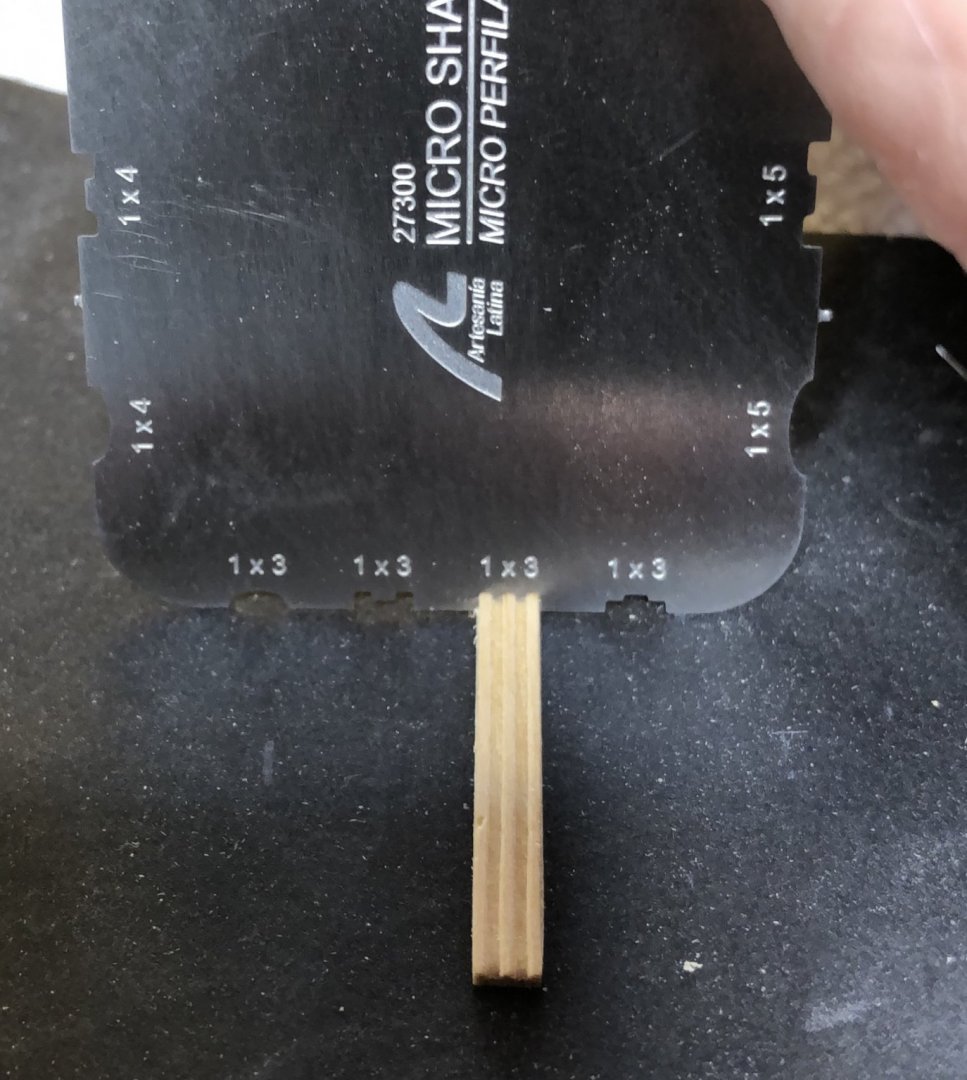
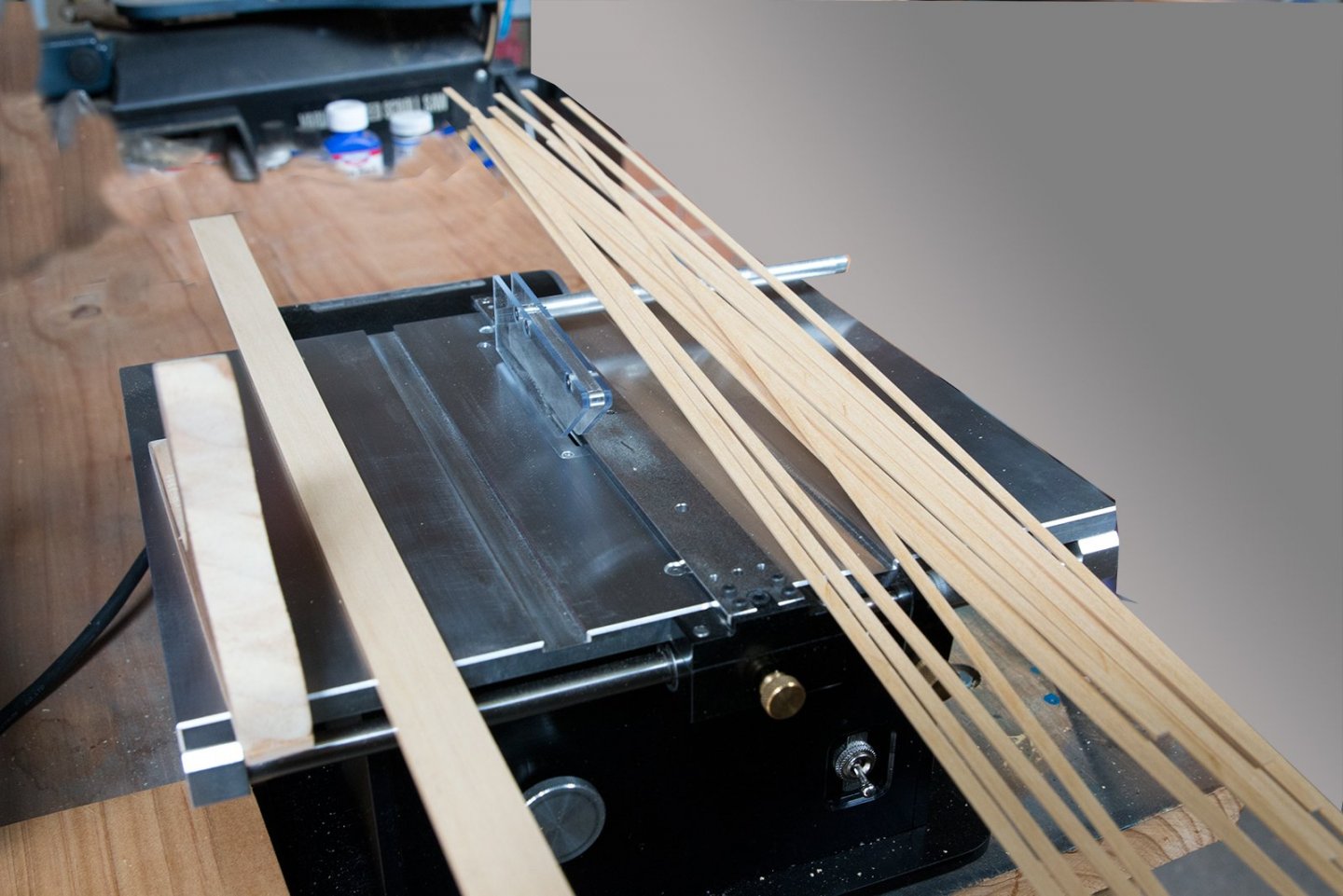
Model Machines Hiatus
in Traders, Dealers, Buying or Selling anything? - Discuss New Products and Ship Model Goodies here as well!!
Posted
Jim,
I placed this order a week or so ago but have not heard about the postage yet:
"Thanks for your on-line order #200817MM14633700 at ByrnesModelMachines.com!"
I am only concerned because orders from the US can take a couple of months to get to Australia and I don't want to be caught in the Christmas rush.
John